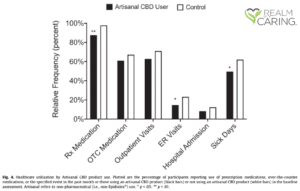
Exploring Holistic Health Options for Diabetes
In today’s fast-paced world, managing chronic conditions like type 2 diabetes can feel overwhelming. However, adopting a holistic approach to health can empower you to take control of your wellness

In today’s fast-paced world, managing chronic conditions like type 2 diabetes can feel overwhelming. However, adopting a holistic approach to health can empower you to take control of your wellness

In recent years, there has been a concerning trend in accidental cannabis exposure among children, particularly during the holiday season. While childproof packaging provides an initial barrier, true cannabis safety

The aroma of roasting turkey, the warmth of family gathering, and yes – for many cannabis consumers – the traditional “cousin walk” around the block. Welcome to Danksgiving, where ancient

Our collective knowledge of the benefits of the cannabis plant for epilepsy continues to increase year after year. In addition to seizure reduction, we have learned through the literature that

Palliative Care can be defined as an approach that improves the quality of life of patients (adults and children) and their families who are facing problems associated with life-threatening illness.

Individuals should have access to therapy options that are effective in improving quality of life without damaging side effects. Currently, veterans who have risked their lives to serve face several

New York Times reporters Megan Twohey, Danielle Ivory, and Carson Kessler recently published findings from their month-long reporting journey into the risks of cannabis use. The article is titled As

Have you ever wondered how THC can enhance female arousal and orgasm? The connection between cannabis and sexual pleasure has piqued interest in the realm of sexual medicine. As more

As October marks Breast Cancer Awareness Month, we at Realm of Caring want to shed light on the potential role of cannabis in supporting cancer patients. Our Executive Director, Sasha

Cannabidiol (CBD) is a non-intoxicating natural compound found in the Cannabis sativa plant that has gained a lot of attention for its therapeutic effects across multiple conditions. For first time
Open the following in new tabs if you:
If you are already a user: Client Login
If you are not, then register: Client Registration
Once Logged in, click below to refresh the page.